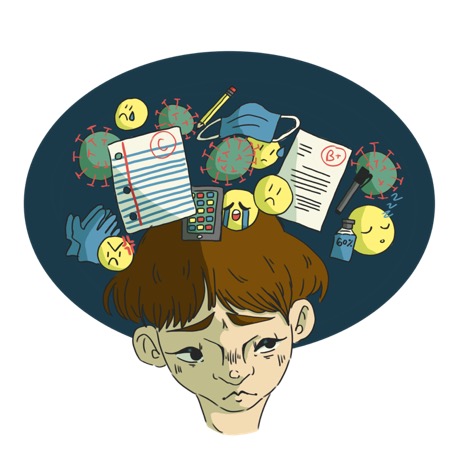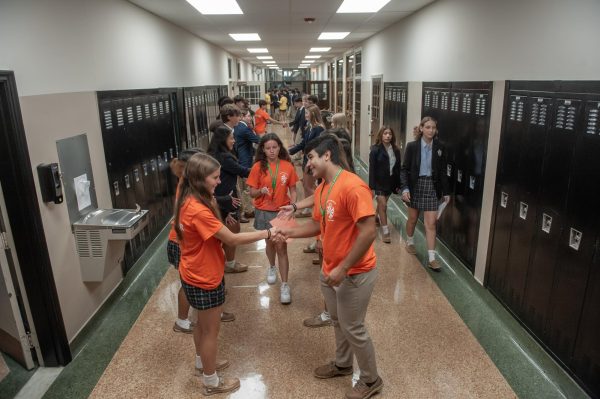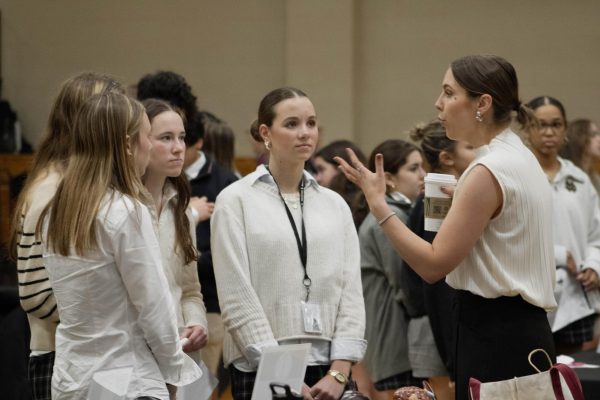COVID-19 Creates Mental Health Crisis
“Six feet apart!” “Social distance!” “Wear a mask!” Those are just a few examples of what we have been hearing for the last seven months. COVID-19 has taken an enormous toll on the United States, as the death toll has reached over 200,000 people, and other disastrous impacts have affected all aspects of our society. Since March 2020, the U.S. has been in and out of lockdown and is only now beginning to slowly return to normal life. From remote learning and the closings of restaurants and bars, to limited food and resources at grocery stores, the American people have not only been battling COVID-19, but we have also been battling the wide-spread implications of the pandemic.
Now, as the nation is only beginning to regain some semblance of normalcy, many are faced with the aftermath of a mental health crisis. With all of the uncertainty, isolation, and mass-hysteria that the pandemic has introduced, it is no surprise that suicide and depression statistics have taken a sharp increase since the beginning of the pandemic. In a study from the U.S. Centers for Disease Control and Prevention (CDC), researchers documented that “almost 41% of respondents are struggling with mental health issues stemming from the pandemic—both related to the coronavirus pandemic itself and the measures put in place to contain it, including physical distancing and stay-at home orders.” Job loss, stress, isolation, and grief from losing loved ones due to COVID-19 have been four of the most influenial factors in the rising depression and anxiety statistics.
Although the COVID-19 mental health crisis has impacted individuals around the world, this subsequent pandemic of anxiety and depression has severely affected students in particular. Teens, who are already at greater risk than adults of developing depression and anxiety, have faced various challenges during the pandemic.
From being in quarantine without seeing family or friends, to juggling the stress of managing e-learning, many children and teenagers have felt alone and isolated. The pressures of needing to maintain good grades, impress parents and stay organized have caused a decline in adolescents’ mental health. Children and young adults have become more anxious, which has led to depression and negative self-esteem. Student-athletes have faced the cancellation of entire seasons, thus removing a popular outlet which many students use as a stress-reliever. These athletes are not only missing out on the adrenaline rush of stepping on the court for a game, and experiencing the associated endorphin release, but are also missing out on seeing their team at practice, engaging in team-building activities and having other social experiences.
In the end, mental health awareness has become more prevalent during the COVID-19 pandemic, but not nearly enough preventative action has been taken to ensure the mental well-being of American citizens at large, but especially those adolescents who are most at risk. Mental health crisis hotlines, suicide prevention hotlines, therapy and doctors are just a few resources available to people who may be mentally struggling.
Doctors and scientists are actively researching ways to help those in need, by observing the mental health effects of COVID-19 and helping to propose creative solutions for those who are stuggling. So as we all traverse these uncharted waters, it is important that we try to remain optimistic, for just as President Abraham Lincoln once so eloquently noted, “And this, too, shall pass, away.”
Stay strong, Friars, and know that no matter how difficult our circumstances become, we are all in this together.








